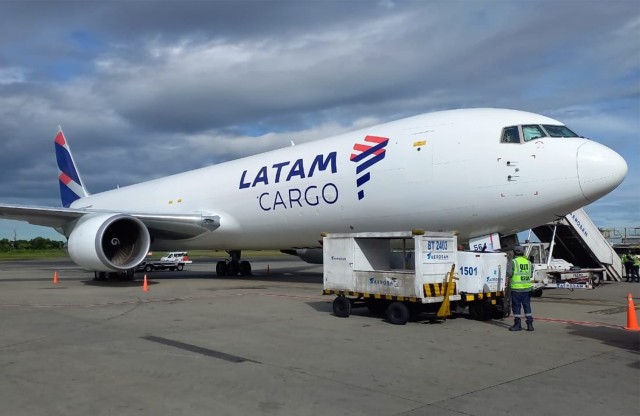Global air cargo flown tonnages have stabilized in the last two weeks of July after dropping significantly in the first half of the month, although worldwide average rates continue to soften, the latest figures from WorldACD Market Data reveal.
Looking at week 30 (July 25 - 31) in isolation, worldwide chargeable weight remained stable compared with the previous week, and the average worldwide rate decreased slightly, based on the more than 350,000 weekly transactions covered by WorldACD’s data and analysis of the main international air cargo lanes.
Comparing the last two weeks of July with the preceding two weeks (2Wo2W), average worldwide rates decreased -3% while chargeable weight increased +1% and overall capacity remained stable. That follows a -10% drop in chargeable weight in the first half of July, on a 2Wo2W basis (and a -12% year-on-year drop).
One factor has been the partial recovery of North American outbound chargeable weight. After dropping more precipitously than usual this year in late June and early July around US Independence Day, North American outbound tonnages rose +5% in the last two weeks of July, on a 2Wo2W basis, and recovered to just -5% below their level this time last year. That volume recovery was boosted by a +6% increase to Asia Pacific in the last two weeks of July, compared with the previous two weeks, and a +4% rise to Europe in the same period.
Chargeable weight from Central & South America to Europe went down particularly strongly in the last two weeks of July (-10%) compared with the preceding two weeks. Asia Pacific outbound volumes have suffered the biggest decline on a year-on-year comparison basis, down -17% compared with the equivalent two weeks last year.
For the overall global market, compared with last year the last two weeks showed a worldwide rate increase of +10%, despite a chargeable weight decline of -7% and a capacity increase of +5%, as higher fuel surcharges continue to inflate overall air cargo prices relative to their levels last year. But that +10% rate differential compared with last year continues to diminish, down from +19% in late June.





